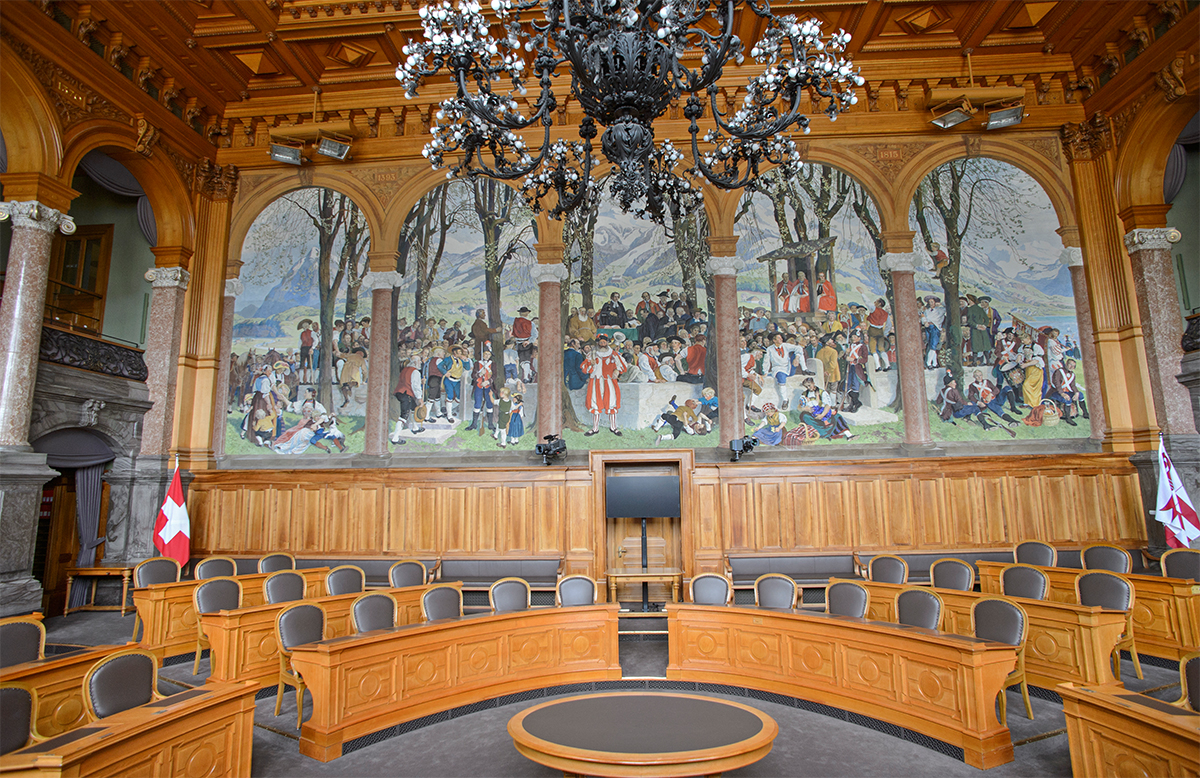The Parliament Building, also referred to as the Federal Palace, was built between 1894 and 1902 according to plans drawn up by the architect Hans Wilhelm Auer. It was officially inaugurated by the United Federal Assembly at a ceremony on 1 April 1902. The Parliament Building stands between the Federal Palace’s West Wing (built 1852–1857) and East Wing (built 1888–1892). It is the final element and architectural highlight of the Federal Palace project. 95% of the materials used were sourced from within Switzerland. The symbolic intention was to illustrate the cultural and material diversity of the country and of its people. For the first time in its over 100-year history, the Parliament Building underwent a thorough renovation between 2006 and 2008, which also involved substantial structural alterations.
Information on decorative features
Domed Hall
In the central domed hall between the two chambers, there are numerous symbolic references to Swiss history and the Swiss federal state. The glass dome displays the cantonal coats of arms in radial order around the Swiss cross. The multiplicity symbolised by the cantons stands in contrast to the unity of the Confederation and emphasises the motto of ‘One for all, all for one’, which frames the Swiss flag. The coat of arms of the canton of Jura is displayed on an adjacent arch, also showing the year in which the new canton was founded (1978). The four large arched windows with scenes of Swiss people at work represent the country‘s four regions and show their principal economic products. The medallions on the dome were produced by Antonio Soldini, a former member of the National Council. They symbolise the military, education, justice and construction.
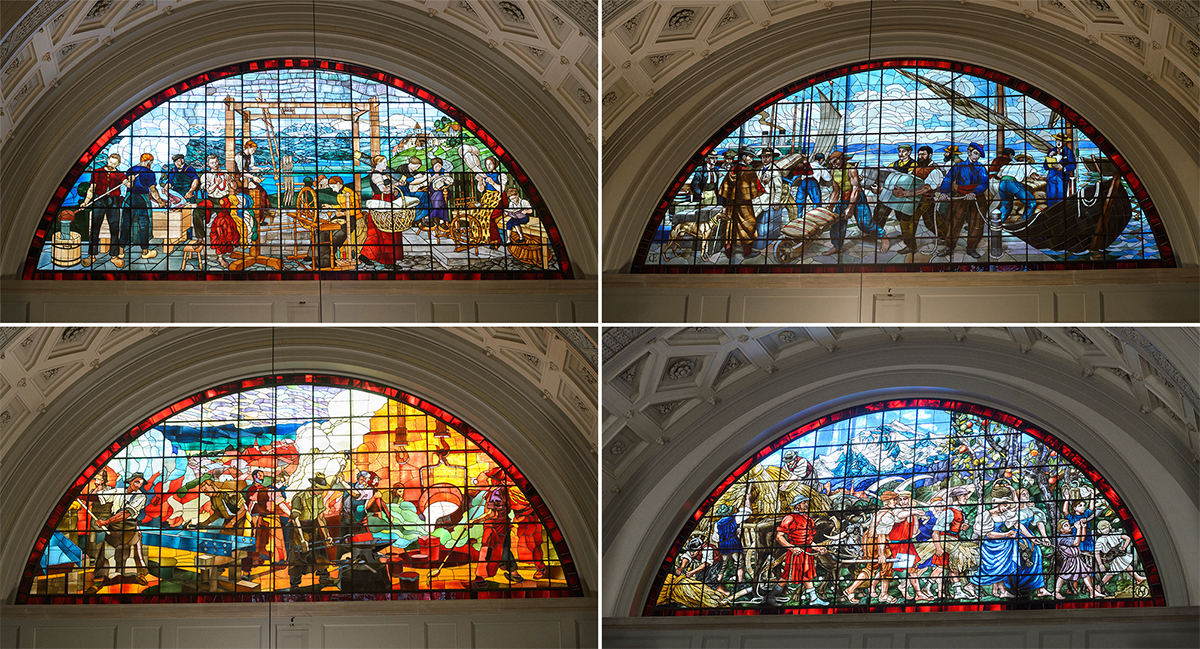
The statue of the Three Confederates (Werner Stauffacher, Walter Fürst and Arnold von Melchtal) swearing an oath on the Rütli meadow was created by James A. Vibert.
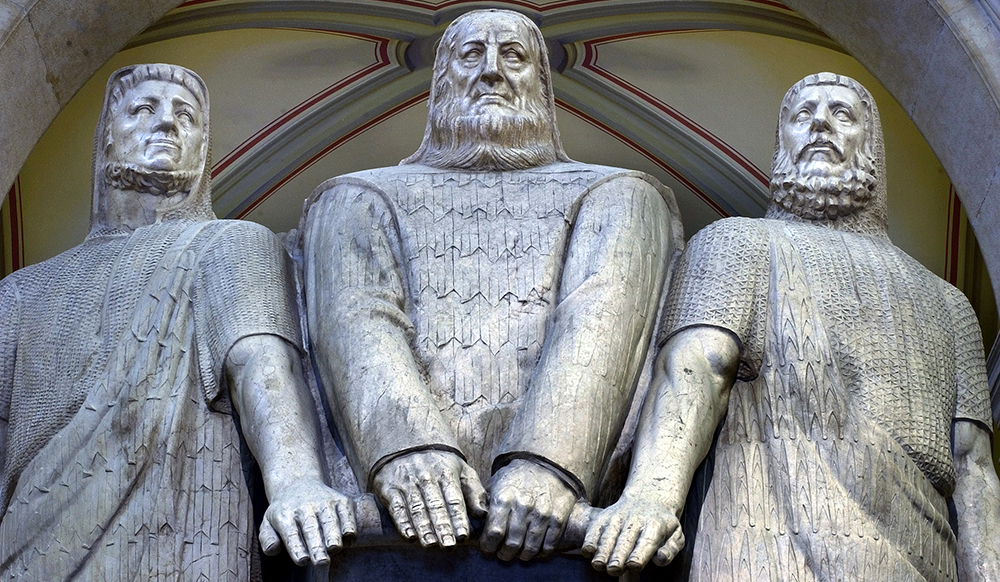
The statues of four mercenaries stand on the balustrades; they represent the four national languages. On the opposite side of the hall, a plaster relief depicts the origins of the Swiss people. It is based on the legend of the forefathers’ arrival as told by Schiller in his work ‘William Tell’.
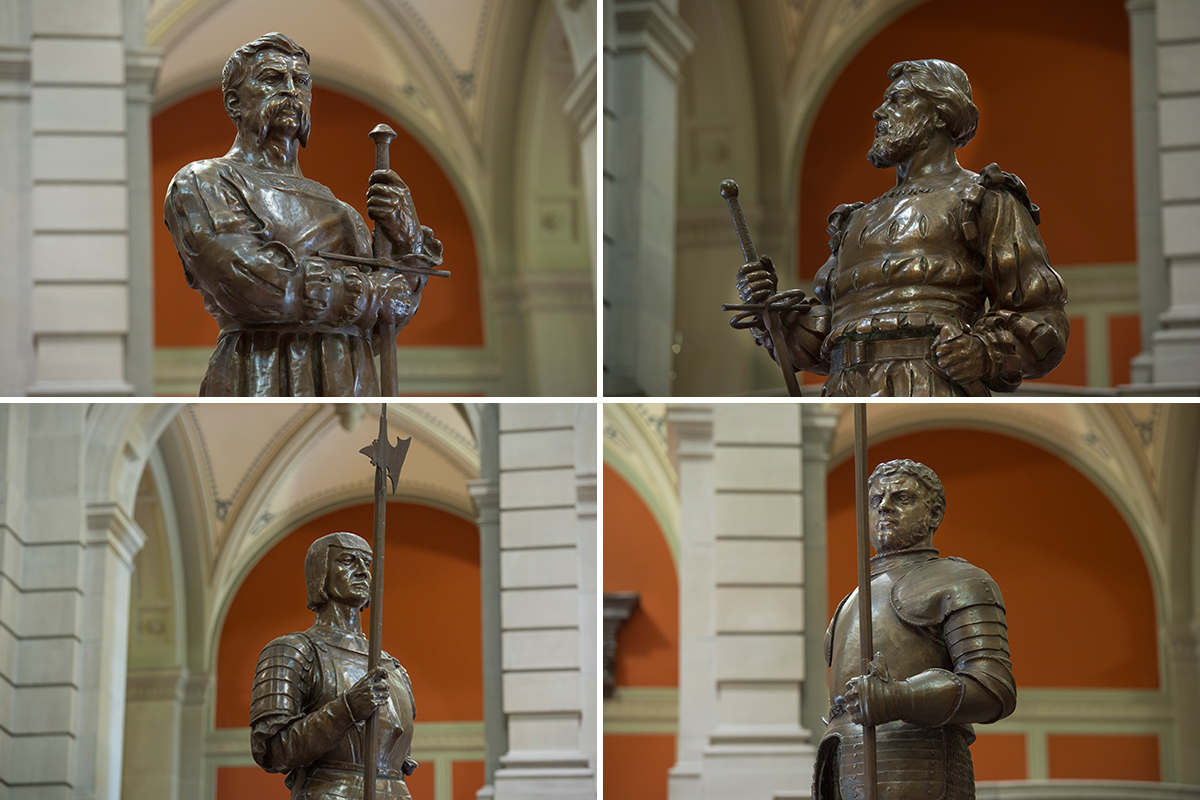
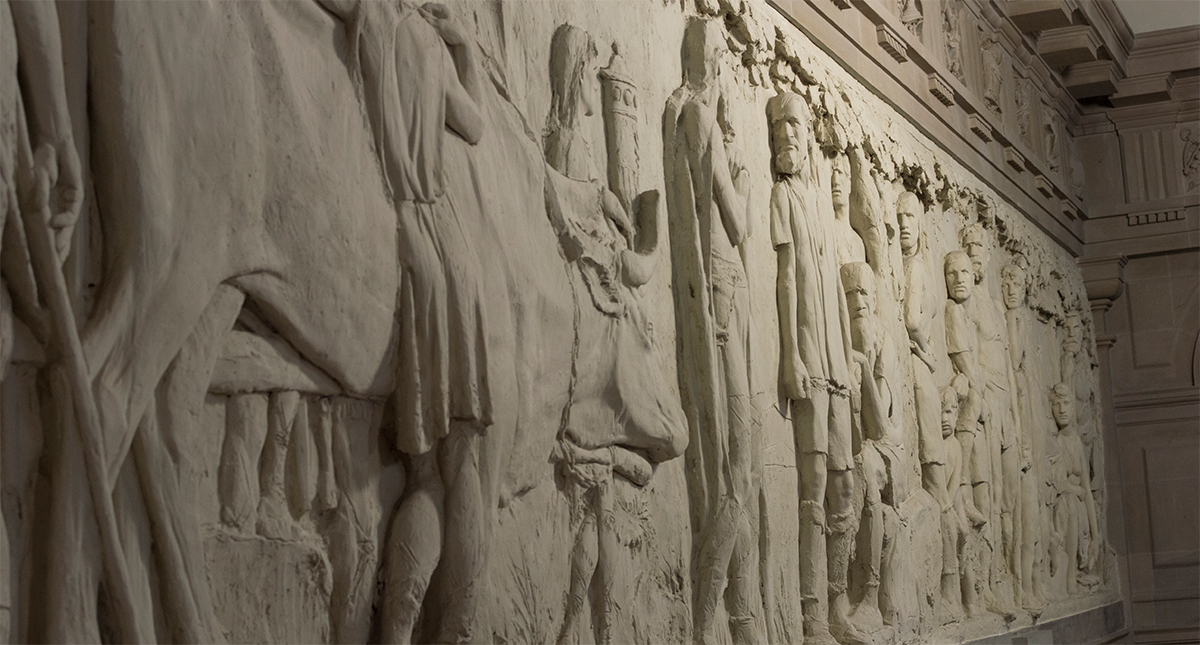
In the niches below the plaster relief are statues of Arnold Winkelried (left) as a symbol of sacrifice, and Niklaus von der Flüe (right) as a symbol of forgiveness.
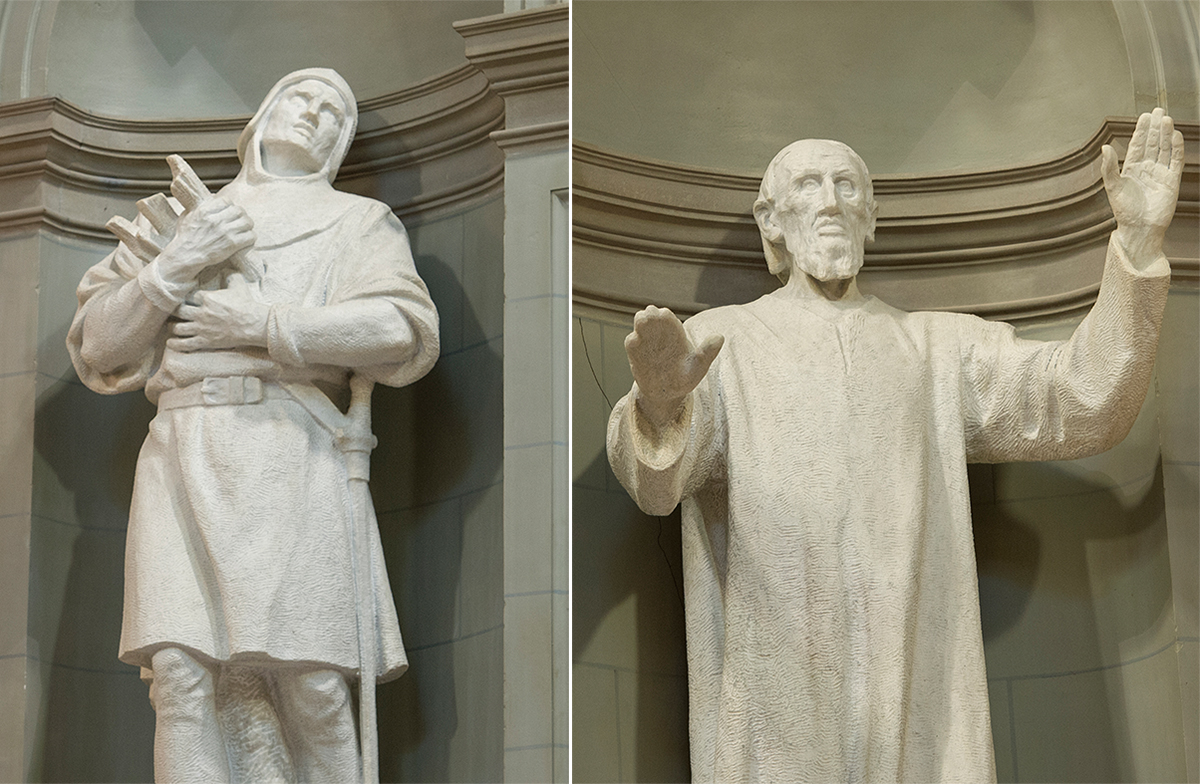
National Council chamber
The National Council chamber is adorned with a five-metre high and twelve-metre wide mural by Charles Giron; in the foreground is the Rütli meadow – the ‘cradle of the Confederation’ – and in the background the mountains known as the two Mythen. In the two niches to the left and right of the mural are two seated figures, Gertrud Stauffacher and William Tell. In the tympanum above Giron’s mural, a female figure recounts tales of their forefathers’ great deeds to a group of rapt children. The coats of arms of 59 Swiss communes arranged by canton adorn the frieze running around the chamber.
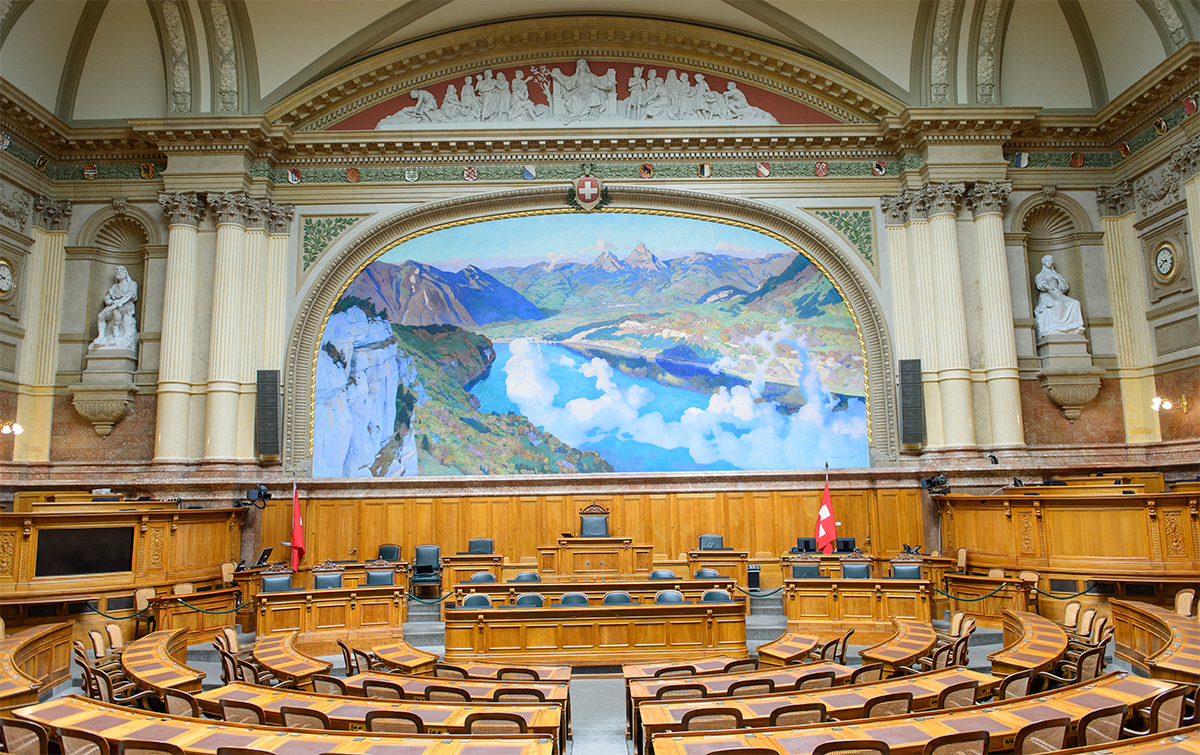
Council of States chamber
The Council of States chamber, which lies above the main entrance overlooking the Bundesplatz, is lit by three high-arched windows. The chamber is accessed through a set of arches in the side walls, above which the public gallery is located. Through a set of painted arches on the rear wall of the chamber (towards the domed hall) the scene depicts a people’s assembly in Nidwalden, a precursor to Switzerland’s parliamentary tradition. The fresco was painted by Albert Welti and his colleague Wilhelm Balmer. The years on the panels between the arches mark important dates in Switzerland’s constitutional history.
